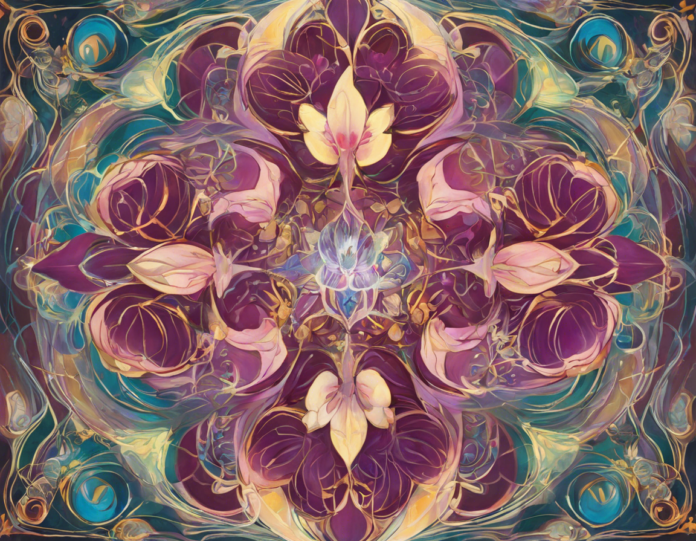Nature has always been a source of wonder, inspiration, and solace for humanity throughout history. One of the most captivating aspects of nature’s beauty is the sacred bloom. Blooms, whether they are from flowers, trees, or other plants, hold a special place in many cultures and have deep symbolism attached to them. In this article, we will explore the meaning of the sacred bloom, its significance across different cultures, and the messages it conveys to us.
The Beauty of Blooms
Blooms are not merely aesthetically pleasing; they also represent the cycle of life, growth, and renewal. The vibrant colors, intricate patterns, and delicate fragrances of blooms captivate our senses and evoke a sense of awe and admiration. Whether it’s the delicate petals of a rose, the majestic blooms of a magnolia tree, or the vibrant colors of a field of wildflowers, blooms have the power to uplift our spirits and connect us to the natural world.
Symbolism of Blooms
1. Love and Romance:
Blooms, especially flowers like roses, have long been associated with love and romance. The giving and receiving of blooms as gifts symbolize affection, passion, and emotional connection. Different blooms have different meanings in the language of flowers, known as floriography.
2. Spiritual Significance:
In many spiritual traditions, blooms are seen as sacred symbols that represent the divine presence in the natural world. Blooms are often used in religious ceremonies, rituals, and offerings as a way to honor the divine and seek blessings for prosperity and abundance.
3. Cycle of Life:
Blooms also symbolize the cycle of life, death, and rebirth. The process of a bud blooming into a flower, withering away, and then seeding new life reflects the eternal cycle of birth, growth, decay, and regeneration that is inherent in nature.
Cultural Significance
1. Asian Culture:
In Asian cultures, blooms such as cherry blossoms, lotus flowers, and chrysanthemums hold significant cultural and symbolic value. Cherry blossoms, for example, symbolize beauty, transience, and renewal in Japanese culture, while lotus flowers represent purity and enlightenment in many Asian traditions.
2. Native American Traditions:
Native American tribes often use blooms and plants in their ceremonies and rituals to connect with nature and the spirit world. Blooms like sage, sweetgrass, and cedar are considered sacred and are used for smudging, purification, and healing practices.
3. European Folklore:
In European folklore and mythology, blooms are often associated with deities, legends, and magical powers. For example, the folklore of the British Isles is rich with stories of fairies and spirits residing in flowers and blooms that hold mystical significance.
The Healing Power of Blooms
Apart from their beauty and symbolism, blooms also have therapeutic properties that promote physical, emotional, and spiritual well-being. Aromatherapy, which uses essential oils extracted from blooms, is one popular way to harness the healing power of blooms. Different blooms have different therapeutic benefits, such as calming lavender, uplifting citrus blooms, and sensual rose blooms.
FAQs about Blooms
1. What is the significance of red blooms in symbolism?
Red blooms are often associated with passion, love, and vitality. They symbolize energy, strength, and intense emotions.
2. Which blooms are traditionally used in wedding bouquets?
Blooms like roses, lilies, hydrangeas, and peonies are popular choices for wedding bouquets due to their beauty and symbolism of love, purity, and prosperity.
3. How can I incorporate blooms into my home décor?
You can use fresh blooms in vases, dried blooms in potpourri, or floral prints in upholstery and accessories to bring the beauty of blooms into your home.
4. Are there any blooms that are considered bad omens in certain cultures?
In some cultures, black blooms like black roses are considered symbols of death or farewell. However, interpretations of bloom symbolism can vary widely across different cultures.
5. What is the best way to preserve blooms for long-lasting beauty?
Drying blooms upside down or pressing them between heavy books are common methods to preserve blooms for decorative or sentimental purposes.
In conclusion, the sacred bloom embodies nature’s beauty, symbolism, and healing powers that have fascinated and inspired humanity for centuries. Whether it’s the romantic allure of a red rose, the spiritual purity of a lotus flower, or the therapeutic fragrance of lavender blooms, blooms continue to captivate our hearts and minds with their timeless elegance and profound significance.
